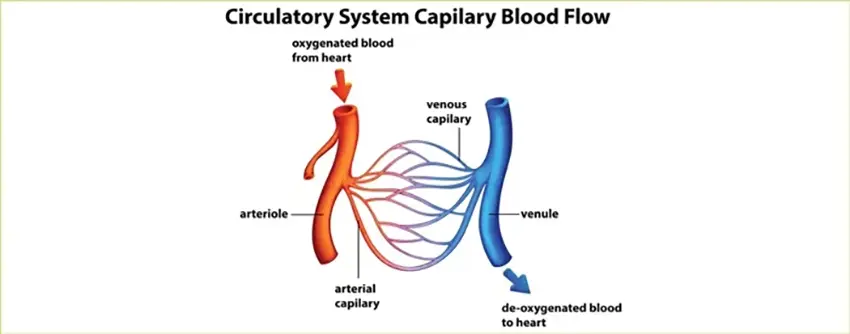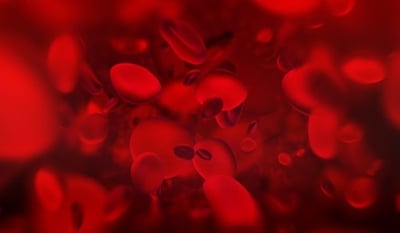Share this
comparing capillary blood with venous blood: understanding the difference and their uses
by Neoteryx Microsampling on Apr 20, 2016 9:00:00 AM
The intricate network of blood vessels in the human body stretches an astonishing 60,000 miles if laid end-to-end. Each vessel type plays a pivotal role in our circulatory system.

Three Blood Vessel Types: A Quick Rundown
- Arterial Blood: Oxygen-rich, this blood circulates through the pulmonary vein, the heart's left chambers, and the arteries across the body.
- Venous Blood: Deoxygenated blood flows through peripheral vessels, then via the venous system to the heart's right atrium. From the right ventricle, it's transported to the lungs through the pulmonary artery. After oxygenation in the lungs, it returns to the heart's left atrium through pulmonary veins.
- Capillary Blood: A unique mix of arterial and venous blood, capillaries bridge the gap between these two types. As arterial blood flows into capillaries, it offloads oxygen and nutrients, picks up waste, and then turns into deoxygenated blood, which travels back to the heart via veins. With its central role in the exchange process, capillaries are often chosen as the preferred blood sampling site.
With its central role in the exchange process, capillaries are often chosen as the preferred blood sampling site. How does this translate when it comes to analysis of blood samples?
The Value of Capillary Blood Sampling
.webp?width=1200&height=854&name=hemaPEN-clinic-setting_(Not-approved).webp)
While lab benchmarks commonly use venous samples, capillary blood offers several advantages:
- Patient Comfort: Dry blood spot (DBS) testing using capillary blood is less invasive, making it preferable for remote or home settings.
- Self-Collection: Patients can easily collect their samples, which is especially beneficial for monitoring chronic conditions.
- Special Populations: It's the preferred method for pediatrics, elderly, and burn patients.
- Point-of-Care Testing: Capillary blood enables quick, on-site blood tests. Its crucial role was evident in the rapid diagnosis and management of the Ebola outbreak.
- Research: Fewer animals are required when using capillary samples, research more resource-efficient and accurate by ensuring consistent sampling from the same subject.
The Ongoing Debate: Venous Vs. Finger-Prick Blood
 A significant discussion revolves around whether capillary (finger-prick) results mirror venous results. While a conclusive answer remains elusive, extensive research indicates that capillary blood can produce high-quality results, closely aligning with or matching venous reference values.
A significant discussion revolves around whether capillary (finger-prick) results mirror venous results. While a conclusive answer remains elusive, extensive research indicates that capillary blood can produce high-quality results, closely aligning with or matching venous reference values.


Sources:
- Osteresch B, Cramer B, Humpf H.U. (2016) Analysis of Ochratoxin A in Dried Blood Spots - Correlation between Venous and Finger-Prick Blood; the Influence of Hematocrit and Spotted Volume. Journal of chromatography. February
- Keevil B.G., Fildes J, Baynes A, Yonan N. (2009) Liquid chromatography-mass spectrometry measurement of tacrolimus in finger-prick samples compared with venous whole blood samples. Annals of Clinical Biochemistry. 46(Pt 2):144-5
- Spooner N, Ramakrishnan Y, Barfield M, Miller S.R. (2010) Use of DBS sample collection to determine circulating drug concentrations in clinical trials: Practicalities and considerations. Bioanalysis. 2(8):1515-22
- Jensen M.E, Ducharme F, Theoret Y, Delvin E.E. (2016) Assessing vitamin D nutritional status: Is capillary blood adequate? Clinica Chimica Acta. international journal of clinical chemistry 457
- Lachance S., Theberge M.C., Havard, G., Levesque A. (2016) Comparison of blood microsampling with DBS and conventional blood collection techniques used in a midazolam biostudy. Bioanalysis. 8(8)
Share this
- Microsampling (205)
- Research, Remote Research (118)
- Venipuncture Alternative (106)
- Clinical Trials, Clinical Research (82)
- Mitra® Device (72)
- Therapeutic Drug Monitoring, TDM (50)
- Dried Blood Spot, DBS (38)
- Biomonitoring, Health, Wellness (31)
- Infectious Disease, Vaccines, COVID-19 (24)
- Decentralized Clinical Trial (DCT) (22)
- Blood Microsampling, Serology (21)
- Omics, Multi-Omics (19)
- Specimen Collection (17)
- Toxicology, Doping, Drug/Alcohol Monitoring, PEth (17)
- hemaPEN® Device (13)
- Preclinical Research, Animal Studies (12)
- Pharmaceuticals, Drug Development (9)
- Harpera® Tool (6)
- Industry News, Microsampling News (5)
- Skin Microsampling, Microbiopsy (5)
- Company Press Release, Product Press Release (4)
- Antibodies, MAbs (3)
- Environmental Toxins, Exposures (1)
- April 2024 (4)
- March 2024 (1)
- February 2024 (2)
- January 2024 (4)
- December 2023 (3)
- November 2023 (3)
- October 2023 (3)
- September 2023 (3)
- July 2023 (3)
- June 2023 (2)
- April 2023 (2)
- March 2023 (2)
- February 2023 (2)
- January 2023 (3)
- December 2022 (2)
- November 2022 (3)
- October 2022 (4)
- September 2022 (3)
- August 2022 (5)
- July 2022 (2)
- June 2022 (2)
- May 2022 (4)
- April 2022 (3)
- March 2022 (3)
- February 2022 (4)
- January 2022 (5)
- December 2021 (3)
- November 2021 (5)
- October 2021 (3)
- September 2021 (3)
- August 2021 (4)
- July 2021 (4)
- June 2021 (4)
- May 2021 (4)
- April 2021 (3)
- March 2021 (5)
- February 2021 (4)
- January 2021 (4)
- December 2020 (3)
- November 2020 (5)
- October 2020 (4)
- September 2020 (3)
- August 2020 (3)
- July 2020 (6)
- June 2020 (4)
- May 2020 (4)
- April 2020 (3)
- March 2020 (6)
- February 2020 (3)
- January 2020 (4)
- December 2019 (5)
- November 2019 (4)
- October 2019 (2)
- September 2019 (4)
- August 2019 (5)
- July 2019 (3)
- June 2019 (7)
- May 2019 (6)
- April 2019 (5)
- March 2019 (6)
- February 2019 (5)
- January 2019 (8)
- December 2018 (3)
- November 2018 (4)
- October 2018 (7)
- September 2018 (6)
- August 2018 (5)
- July 2018 (8)
- June 2018 (6)
- May 2018 (5)
- April 2018 (6)
- March 2018 (4)
- February 2018 (6)
- January 2018 (4)
- December 2017 (2)
- November 2017 (3)
- October 2017 (2)
- September 2017 (4)
- August 2017 (2)
- July 2017 (4)
- June 2017 (5)
- May 2017 (6)
- April 2017 (6)
- March 2017 (5)
- February 2017 (4)
- January 2017 (1)
- July 2016 (3)
- May 2016 (1)
- April 2016 (2)

Comments (2)